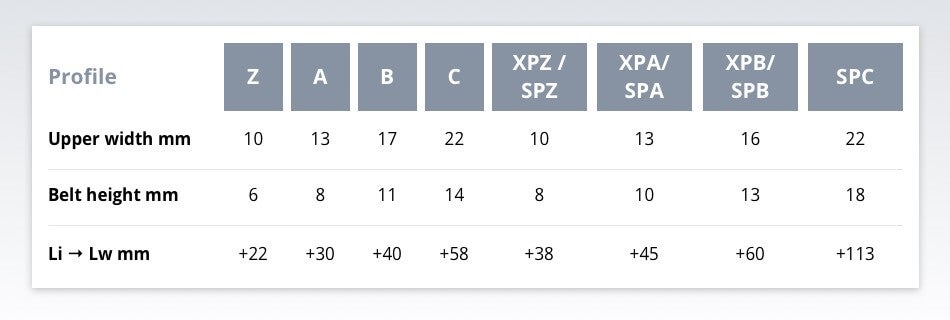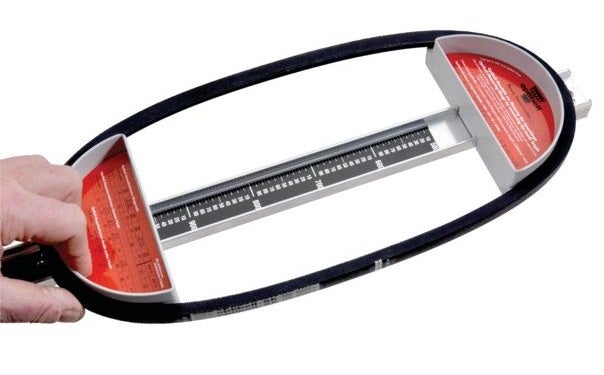Stretched, torn or otherwise damaged: V-Belts are susceptible to wear. Before you replace a V-Belt, you will need to know which belt size you require and how this should be measured. We're happy to help you!
First, would you like to know more about different types of belts (Flat Belts, Fan Belts, Timing Belts and V-Belts) and profiles, how to measure them correctly and which type to choose? Check out this article!
In order to identify the V-Belt you need, you must first know which types of V-Belts are used. Over the years, V-Belts have evolved considerably and generally we tend to differentiate between the following types:
Classic Belt (VB)
For the Classic Belts, the internal length (also known as the internal dimension) (Li) is used to determine the length. This method is used because flat belts were also categorised in this manner in the past. The classic profiles can be identified on the Kramp website using the designation 'VB' (classic profiles). For example, "VB131016".
VB = classic profiles
13 = width in mm
1016 = internal length in mm
Narrow Profile (high power/SK)
These belts are reinforced and have a slightly higher profile. This results in improved performance, resulting in increased power transmission in comparison to the classic belts.
Toothed Belts
These belts have "teeth" on the inside. The excellent flexibility of these V-belts makes it possible to use V-belt pulleys with a small diameter.
 Li = internal length
Ld = date length
La = external length
Li = internal length
Ld = date length
La = external lengthDetermining the Length of a V-Belt
For V-Belts, a variety of different length measurements are used:
- Li = inner length/internal length
- Ld/Lw = date length (this is the length of the cord in the V-belt and therefore cannot be measured, this is categorised according to the ISO standard)
- La = external length, can be easily measured
The producer or manufacturer determines whether the internal or external length is displayed. Traditionally for classic V-Belts (VB), the internal length (Li) plus a letter indicating the profile size is used as the size designation or type. For other types of belts, the date length is used to indicate the length (Ld/Lw) and is categorised according to the ISO standard. The width measurements of all types of V-Belts are also fixed.
 In this overview you will find out about the different length and width measurements available
In this overview you will find out about the different length and width measurements availableMeasuring V-Belts
You can find out at a glance which V-Belt you need to order by referring to the number indicated on the belt. If the length indicated on the belt is no longer legible, you will need to determine the right effective belt length yourself. The V-belt length gauge VB900000 makes it incredibly easy to measure V-Belts and allows you to determine the various lengths for each type of belt at the same time. These are the various calculations that are used:
VB (classic profile)
For classic profiles, the date and outside lengths are calculated as follows:
Date length = inside length + 30 mm.
Outside length = inside length + 50 mm.
Narrow profile belts
The inner and outer length are calculated as follows:
Inside length = date length - 45 mm.
Outside length = date length + 18 mm.
In order to demonstrate the various sizes and the differences between inside, date and outside length of the various V-Belts, we have prepared a table for you:
 Table Shows Different Sizes
Table Shows Different Sizes Measuring V-Belts
Measuring V-BeltsExpert Advice
To make sure that you purchase the right V-Belt, it is a good idea to take the old, broken belt to a specialist. Please contact one of our product specialists or find a Kramp dealer in your area. At Kramp, we will be more than happy to help you. Feel free to get in touch via knowledgecenter@kramp.com.

